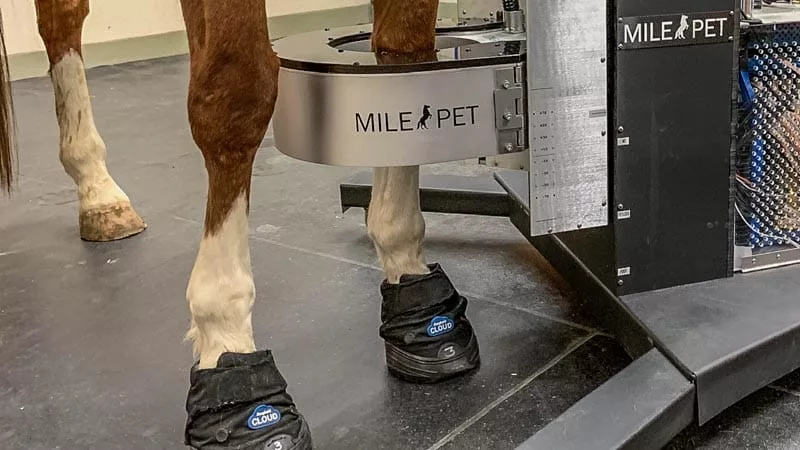After less than 6 years after performing the world’s first positron emission tomography (PET) scan on a standing horse, the University of California, Davis, has put the latest standing equine PET scanner into operation.
The MILEPET replaces the piPET scanner, which initially was developed to image the human brain. The MILEPET allows UC Davis to improve the detection of injuries of the equine limbs without the need for the horses to undergo general anesthesia during imaging.
The first clinical case to use the MILEPET scanner was a mule that was included in a clinical trial that aims to combine standing PET with standing MRI.
Jool, the mule, has chronic tendon lesions that initially improved with stem cell therapy; however, her lameness recurred. The scan revealed that in addition to the tendon lesion, Jool’s navicular bone is a source of pain. The active bone turnover was not apparent on the MRI. The finding led farrier Shane Westman to modify Joo’s shoeing to protect the navicular bone.
The scanner is now part of a study that aims to assess the progression of laminitis. To optimally manage trimming and shoeing of these horses, Westman relies on imaging techniques.
“The standing PET scanner will allow us to offer this cutting-edge modality to more cases than we could before,” says Dr. Mathieu Spriet, who led the UC Davis team that developed the use of the PET scan technique. “Repeating scans on the same patient will help us optimize treatment and rehabilitation for better outcomes.”
The scanner is made possible because of funding support from the UC Davis Center for Equine Health and the Stronach Group, which uses a scanner at its Santa Anita Park.
Learn More
UC Davis Treats White Line Disease with Surgical Laser
A team of veterinary specialists, scientists and farriers at the University of California, Davis are using a surgical laser as an innovative form of treatment for advanced cases of white line disease.
UC Davis Acquires First Equine PET Scanner
The University of California-Davis veterinary hospital recently acquired a positron emission tomography (PET) scanner, becoming the first veterinary facility in the world to utilize the imaging technology for equine patients.
UC Davis Performs First PET Scan on Standing Horse
The University of California Davis School of Veterinary Medicine has successfully used positron emission tomography (PET) on a standing horse.







